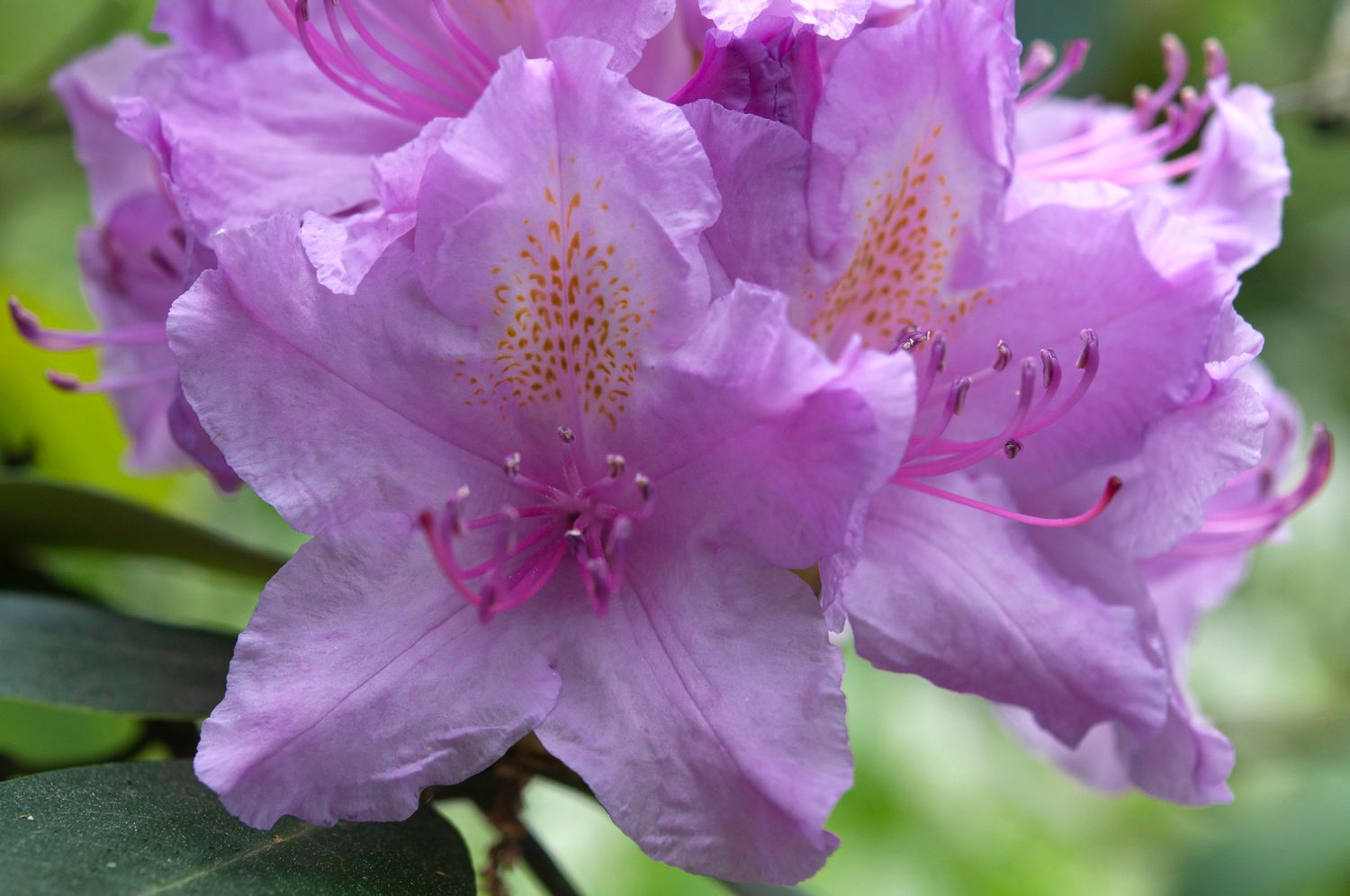Table of Contents
Bold, vibrant, and colourful accents! Beautiful flowers are blooming all over your yard. Stunning shrubs with the potential to outgrow you and your house. Of course, we’re discussing rhododendrons, among the world’s most well-liked garden plants.
What follows is a comprehensive guide to cultivating these beautiful blossoms in your yard. At least 1,024 species of trees and shrubs are classified under the genus Rhododendron. They are evergreen or deciduous members of the heath family.
Originally from Asia, you can now find them in the wild in the Pacific Northwest, California, and the Appalachian Mountains. We will cover the best time to plant and the proper planting techniques. We will also discuss the essential tasks of watering, mulching, trimming, and fertilising your plants to ensure their health and vitality. The continued growth and success of your rhododendrons depend on these essential practices.
In addition, we will discuss when to feed rhododendrons. It is a critical part of rhododendron maintenance.
Picking the Perfect Rhododendron
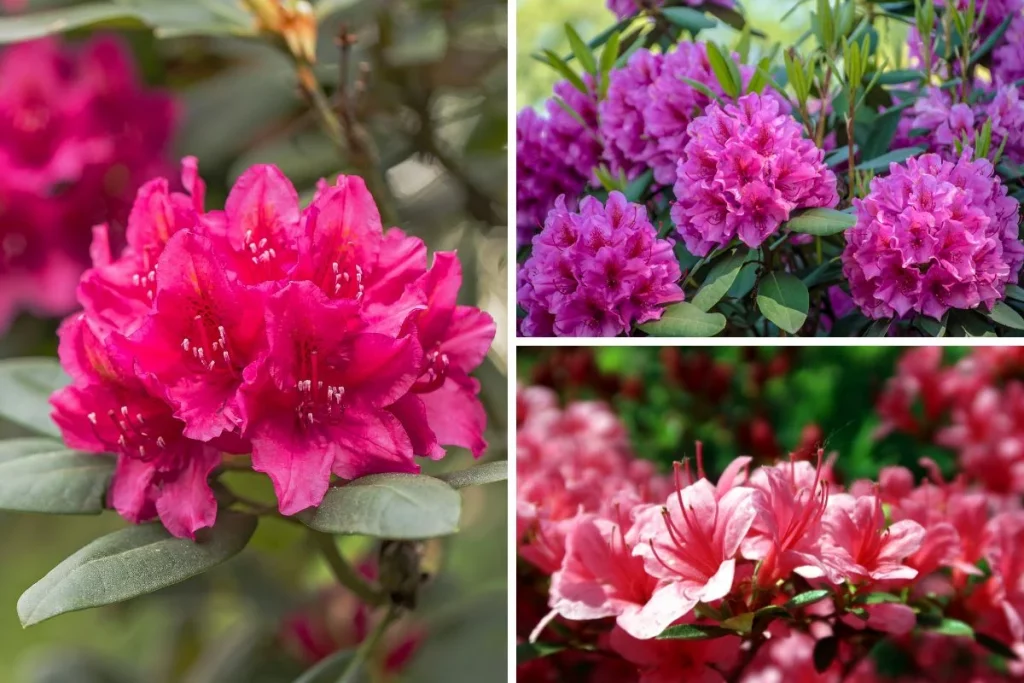
Selecting the appropriate rhododendron variety is crucial for robust development and impressive blooms. In this section, we’ll explore the process of judging the climate and terrain before deciding on a particular rhododendron species to cultivate.
- Soil And Climate Evaluation: Rhododendrons fare particularly well in the UK’s cool, temperate environment, making them a popular home garden plant. The local climate and soil conditions must be considered while selecting a variety for optimal growth. Think about this:
- Durability: Find rhododendron types that thrive in your area’s weather conditions. You can understand a plant’s cold tolerance from its hardness grade.
- Extreme Weather: Think about how hot or chilly it gets where you live. The temperature tolerance of different rhododendron species varies.
- Balanced Soil pH: The ideal soil pH for rhododendrons is between 4.5 and 6. Discover the pH level of your soil and opt for a plant species that will thrive in that specific environment. To foster a more acidic atmosphere, you might require soil supplements such as sulphur or pine needles if your soil is exceedingly alkaline.
- Choosing The Best Site: Rhododendrons thrive in specific environments; therefore, picking the proper one for your plants is essential. When choosing a location for them, keep the following in mind:
- Sunlight: Rhododendrons prefer areas with filtered or indirect light. The leaves can burn by prolonged exposure to direct sunshine, while heavy shadows may prevent flowering. Look for a spot with at least some morning sunlight or filtered light all day.
- Exposed To The Wind: Rhododendrons are susceptible to wind damage, harming their fragile blossoms and leaves. Find a site with some protection from the wind, or prepare to build or plant some windbreaks.
- Drainage Of Soil: Waterlogging can cause root rot in rhododendrons, so it’s essential to plant them in soil that drains properly. Plant them in low-lying locations or clay soils because they are susceptible to waterlogging.
Planting and Repotting the Plants
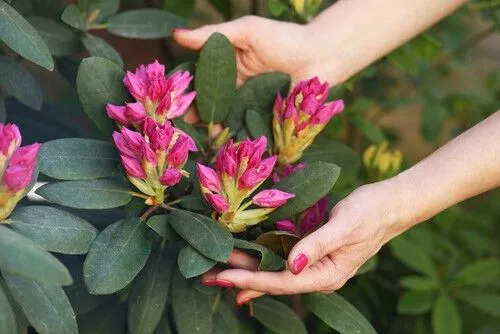
Rhododendrons are stunning shrubs, but their long-term survival and health depend heavily on how well they are planted and transplanted. Whether starting from scratch or relocating an existing plant, following these steps will help your rhododendron establish and thrive in its new home. Here we’ll look at some of the most important considerations while planting or relocating rhododendrons.
1. The Ideal Time to Plant
For optimal growth of your rhododendrons, it is crucial to plant them at the appropriate time. Late autumn or early spring is the most suitable season for planting in the UK. Planting in autumn allows ample time for the plants to establish their roots before winter, whereas planting in spring allows them to establish before the scorching summer. Avoid planting during extreme cold or hot weather to minimise plant stress.
2. Start Digging
It is essential to dig the hole while planting the plant properly. The hole should be broader than the root ball and slightly shallower. It facilitates the spread and establishment of the roots. Break up the soil at the bottom of the hole to facilitate root growth. The planting environment must contain rocks, weeds, and other detritus.
3. Preparing the Soil
Rhododendrons prefer acidic soil in the range of 4.5–6 on the pH scale. Checking the soil and making any required adjustments before planting is essential. You can improve soil drainage by adding organic matter like compost, peat moss, or well-rotted manure if it is thick or clayey. Incorporate these essential elements into the soil and blend them at the base of the hole where you will place the plant.
4. Methods of Plantation
Delicately raise the rhododendron from its container, evading the roots. Roots that are nearby should be detached to encourage branching. Position it in the centre of the pit you excavated, ensuring it’s at the equivalent level as in its prior container. Load the hole with the fresh soil and carefully compact it around the plant’s roots.
Providing Water and Mulch
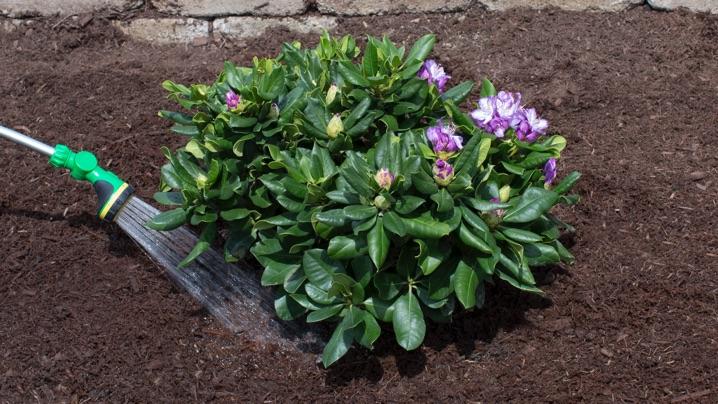
Rhododendrons can only thrive with the right amount of water and mulch. The rules for watering your plants and the advantages of mulching are covered here.
- Rules For Watering: Rhododendrons need constant moisture, but not so much that their roots rot. To ensure your plants stay healthy and hydrated, follow these watering guidelines:
- Watering Deeply: To promote root development, water deeply but infrequently. In most cases, once weekly deep irrigation is sufficient.
- Keeping An Eye On The Soil Moisture Levels: Be sure to keep an eye on the soil’s moisture levels. To find the roots of a plant, dig down about an inch and stick your finger in. If it seems dry, it probably is.
- Irrigation Methods: Use a slow, moderate stream to get the water deep into the soil. The plant roots are easily damaged, so avoid high-pressure jets.
Advantages Of Mulching
Mulching is a great maintenance technique for rhododendrons because of its many advantages.
- Preserving Water: Organic mulch, such as bark chips or shredded leaves, keeps moisture in the soil for longer by acting as a barrier between the soil and the air. It is of paramount significance in times of drought or high temperatures.
- Suppression Of Weeds: Mulch prevents weeds from growing and competing for water and nutrients in your garden.
- Controlling The Temperature Of Soil: Mulch can help insulate the soil, making it more bearable for plant roots during hot weather. It can also help in minimising damage from sudden shifts in soil temperature.
- Reusing Waste Nutrients: Mulch adds organic matter to the soil as it decomposes, improving soil fertility and the activity of bacteria.
Maintenance and Cutbacks of Rhododendrons
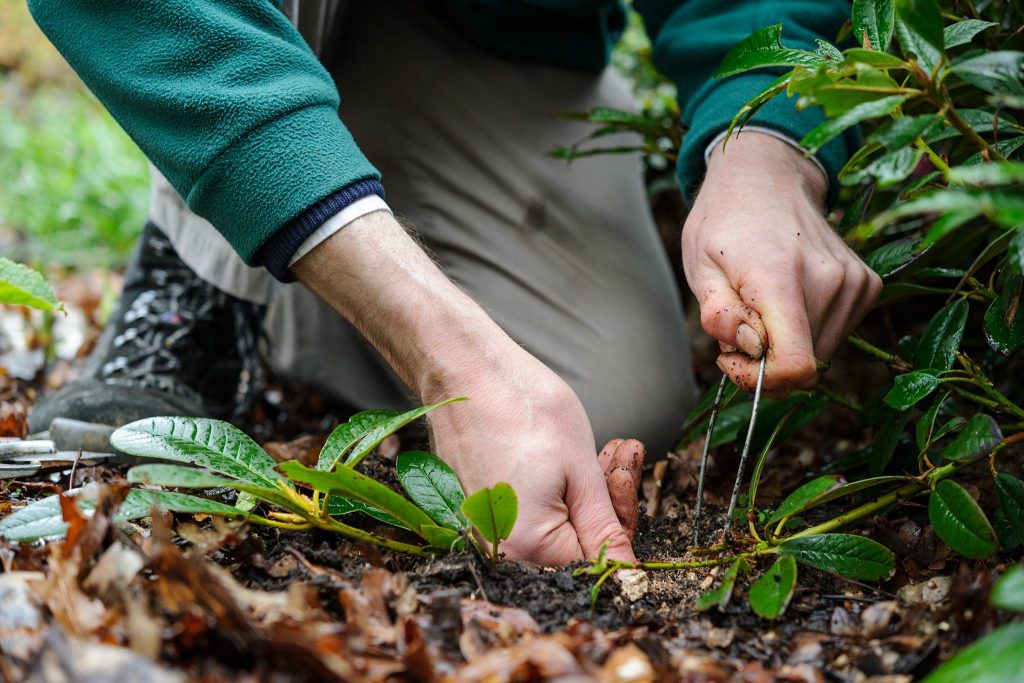
Keeping your rhododendron plants healthy, well-shaped, and vigorous requires regular pruning. When pruning, it’s essential to take your time and be precise so you don’t cause undue stress or harm to the plant. Some basic pruning methods to keep in mind are as follows:
1. Cut Back Blooming Plants Immediately
Pruning rhododendrons require a keen eye for timing. You should prune them soon after flowering has ended for optimum results. By cutting back a plant at the end of its blooming period, you can shape it for the following growing season and ensure its health. If you put off pruning until the last minute, you risk cutting off the bloom buds for the following year.
2. Get Rid of Damaged or Dead Branches
Remove any damaged or dead limbs from your rhododendron at regular intervals. These may be symptoms of age, illness, or pest infestation. Removing these branches makes the plant seem nicer, improves health, and protects it from further harm.
3. To Deal with Crossing or Overcrowding
It’s not uncommon for rhododendrons to have tangled, overlapping branches. It can reduce ventilation, accumulate moisture, and spread illness. Remove the less desirable of two branches crossing or scraping against each other. Thin out overgrown areas to strengthen the plant’s framework and increase light penetration.
4. Keep the Shape
Keep the rhododendron’s original form in mind while you prune it. Never prune a plant severely or too often since this might negatively impact its ability to recover and continue growing and flowering. Instead, you should do light shaping to improve the plant’s appearance without drastically altering its structure.
5. Make Sure You Have the Right Pruning Equipment
Use sharp tools like bypass pruners or loppers to make clean, accurate cuts. Wipe down the blades before and after each usage to stop disease transmission. Use a pruning saw on heavier branches. Just above a dormant bud or lateral branch, make a shallow slanting cut to encourage growth in the desired direction.
When to Feed Rhododendrons in The UK?
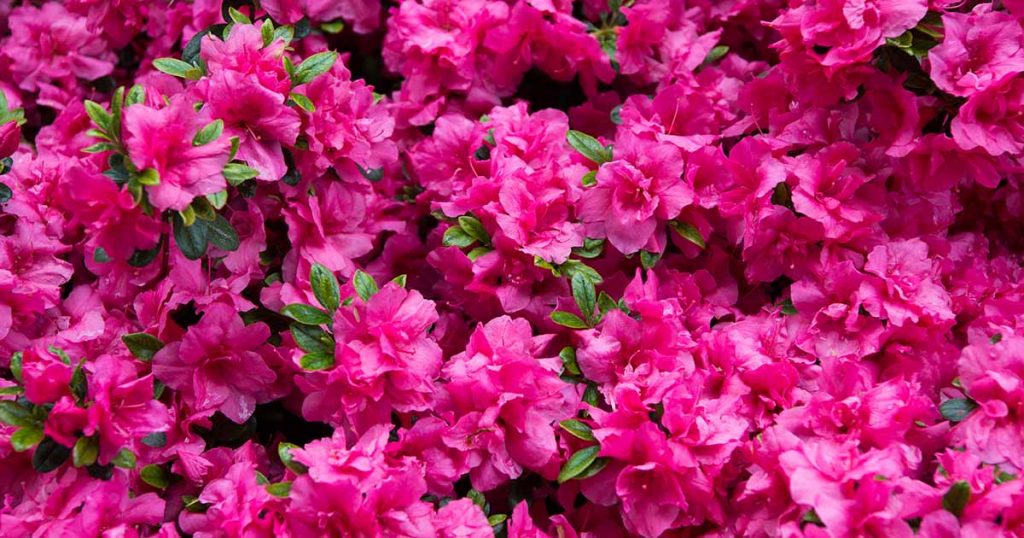
One must feed rhododendrons at the right time and with nutrients to ensure their continued health and rapid growth. Understanding when to feed these lovely shrubs is crucial in the UK. Let’s dig into the question of when to feed rhododendrons in the UK to give them the best chance at thriving.
1. Feeding in The Cold Season or Early Spring
The first time you can feed rhododendrons in the UK is in late winter or early spring, around February and March. This feeding gives the plant the nutrition it needs when it comes out of hibernation and gets ready to thrive again. If you desire your plants to flourish in acidic soil, employ a sluggish-discharge manure designed for that objective. These manures possess a gradual discharge of nourishments. It guarantees the rhododendrons will acquire a steady provision when advancement is restored.
2. Early Summer or Late Spring Feeding
Rhododendrons benefit significantly from a second feeding in late spring or early summer when they are actively growing and blooming. It occurs when plants actively produce new growth and prepare flower buds for the following season. By applying a well-balanced fertiliser now, you can restore any nutrients used up during the rapid expansion of the plant’s first few weeks.
3. Additional Things to Remember
Adhering to the fertiliser dosage and application directions on the packaging is crucial when giving your rhododendrons food. If you over-fertilise, the plant will put energy toward growing leaves instead of flowers. When fertiliser is applied, keep a safe distance from the stem and leaves to prevent leaf burn.
Organic matter, such as compost or well-rotted manure, added to the soil with regular fertilisation is beneficial. Soil with higher levels of organic matter is more fertile, holds moisture longer, and is home to more helpful microbes.
After feeding your rhododendrons, give them a good soaking of water. It facilitates the nutrients’ dissolution and transport to the root zone, where the plants may take them up. Rhododendrons have relatively shallow root systems; thus, keeping the soil consistently moist is essential.
Summing It Up
All in all, to cultivate and care for rhododendrons in the UK, one must pay close attention to detail, learn about their requirements, and be proactive in their upkeep. You can help your rhododendrons flourish by picking a variety that does well in your area, providing the correct amount of light and shade, and planting it in well-draining, acidic soil rich in organic matter.
One must know when to feed rhododendrons in the UK. Apply the appropriate amount of a suitable fertiliser twice a year, once in the late winter or early spring and again in the late spring or early summer. You can make your rhododendrons the showpiece of your yard, complete with magnificent blossoms and lustrous foliage, by following these rules and adopting preventative steps.
Your rhododendrons will reward you with years of natural beauty and joy if you show them patience, care, and proper upkeep.

